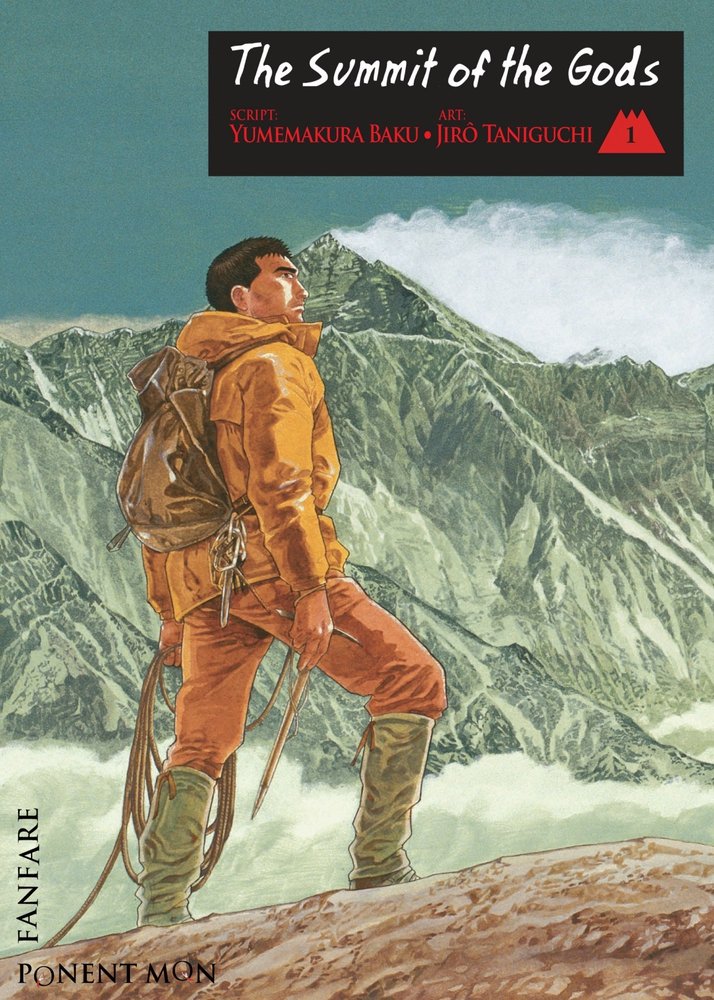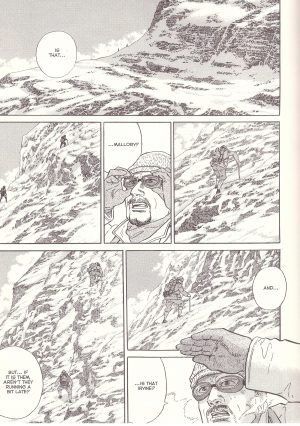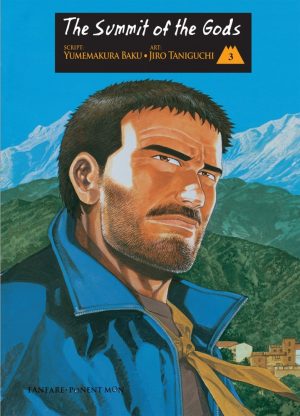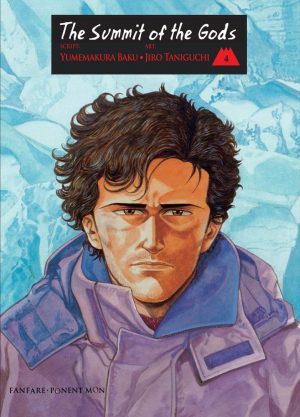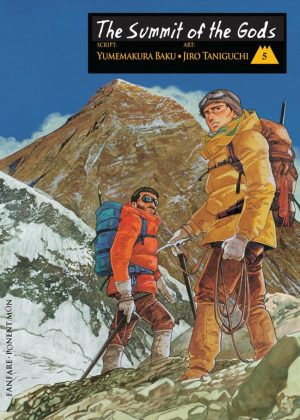Review by Ian Keogh
Very few graphic novels have placed mountaineering at their centre, so five volumes of The Summit of the Gods has an almost unique selling point via subject matter alone. It additionally enables Jirô Taniguchi to produce page after glorious page of mountain scenery, as per the sample art. Look closely and it can be seen how delicately the scenes are constructed. This was in the days before widespread use of digital tools, and Taniguchi’s mountains are formed from crosshatched inking and little patches of zip-a-tone or letraset.
Taniguchi is adapting an award-winning novel from a script provided by author Yumemakura Baku, that in turn became an award-winning graphic novel, Taniguchi picking up a prize for best artist at the 2005 Angoulême festival. It’s a compulsive experience developing from a mystery set in Nepal over the first couple of chapters before becoming the story of obsessed and exceptionally talented Japanese climber Jouji Habu, or Bikha Sanp as he’s known in Nepal, a name translating as Venomous Snake. Learning the story in the present day is photographer Makoto Fukamachi who accompanied a Japanese party’s attempt to climb Mount Everest. He anticipated success and a book of his pictures, but the expedition ended in tragedy and left him haunted at the last pictures he took of a climber falling to his death. Instead he becomes captivated by Habu’s story, being Japan’s greatest climber of the 1970s, yet resentful at being held back from the world’s major peaks through lack of finance.
Fukamachi’s piecing together of Habu’s past via interviewing various acquaintances – Habu didn’t have friends – is a real page-turner. Through Fukamachi readers learn of Habu’s instinctive talents and off-putting personality, and come to understand why he’s so driven. There’s no disguising that it makes Habu a difficult human being, one to whom the result is all, and anyone accompanying him for the sake of safety or companionship is barely tolerated. Around midway through Habu makes a typically honest, but unpalatable statement, and it lays a shadow of foreboding doom over every following page, as there’s an awareness that he’ll later find himself in the situation he describes.
The Summit of the Gods in passing explains the necessities of climbing in considerable detail, little techniques along with the standard methods. It’s sometimes astonishing information. A solo climber attempting a difficult mountain has to cover the entire ground twice, as it’s not possible to carry all the required baggage while pinning out a route. The route has to be marked, and the baggage then retrieved.
Like all the best creators, Baku and Taniguchi place readers at the centre of their leading characters’ purpose, and that breaks through any barrier possibly erected by a lack of interest in mountaineering as a subject, making for a rewarding read. The dip into Habu’s past isn’t finished when this volume is, and continues in The Summit of the Gods 2.
